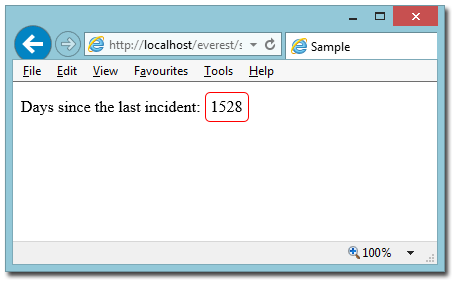
EveREST ²JDE
World-fastest integration middleware platform for JD Edwards® EnterpriseOne®
Speed up any integration project with JDE access, using this modern interface
Current version: 1.0
- Product Brief
- More Details
- System Requirements
- Licensing
Standard JDE offers AIS server, which provides REST interfaces, but not for calling BSFN's, and BSSV server that provides old SOAP interfaces for BSFN's. Both will trigger additional per-device licensing and AIS may also trigger additional module licensing in JDE, potentially making this approach prohibitively expensive. Our EveREST²JDE, on the other hand, is using JDE XML interfaces, which have no licensing implications.
Modern REST paradigm is replacing old SOAP. And now everything is ready for this change.
With a "per call" overhead of just about 5ms, this platform is at least 20 times faster than any other! - This means that you can do many more transactions in less time, using smaller and fewer servers. Your interfaces will not waste any more time waiting for the middleware to respond.
This solution offers easy programmatic lookups for both 1) Function Names and 2) Function Data Structure parameters, plus 3) an easy way to build a complete JSON structure for a subsequent BSFN Call. With these development features in place, it's also the easiest development platform for JDE BSFN integration.
And on top of these already impressive features, this solution also offers a way to submit arbitrary XML to the server, which can be a complete structured XML program (JDE supports extended XML call syntax with transactions, variables, multi-function calls passing parameters to each other and error handling), or a UBE XML (JDE UBEXML kernel supports very flexible syntax that covers most UBE operations, including overriding RI, PO & DS parameters, as well as Queue & Printer, plus a complete job manipulation set of calls).
Since any REST client can tap into this functionality, even ASP & PHP webpages can do this quite easily, possibly the simplest example of such an integration project could be incorporating counters/gadgets/watchlists, implemented in mere hours, into your corporate intranet webpages, which would be reading dynamic values straight from your JDE system, i.e.:

It is clear that this solution is by far the most advanced integration middleware in its class on the market. And while JDE AIS is admittely more advanced, it does not offer any of this functionality and is fundamentally too heavy for most integration projects, save the largest ones.
Nearly all programming languages have direct support for REST & JSON, including all mobile platforms. Developing mobile applications for JDE using this platform is certainly the easiest way to do it.
Our implementation also boasts a dramatic improvement on the average per-call overhead, bringing it down to single-digit milliseconds!!! - this is industry-best performance, outperforming Oracle's BSSV by at least 20 times:
1) It's implemented in a native (machine code) 64-bit (or 32-bit) executable, rather than any interpreted language like Java or .Net;
2) It uses advanced caching algorithms to minimize round-trips to the server;
3) We have re-implemented server comms and thus eliminated all JDE client components and the associated overheads.
So your interfaces can now be waiting for the actual JDE business function results and not for the middleware!
JDE Release support starts with XE (!!!) and runs all the way up to the latest JDE releases.
This solution is executing all JDE business functions on the Enterprise/Logic/Batch Server(s) and fully supports multi-threaded, multi-user operation. For scalability reasons, multiple EveREST2JDE Installations connected to multiple JDE Servers can be deployed, increasing throughput as necessary.
And of course, the fact that using this solution will not trigger any additional licensing costs in JDE is also very important. With BSSV and/or AIS, there will be additional licensing implications.
A free trial version of this software is available - please, contact us.
Nothing can be easier!
OS: MS Windows (x32 or x64)
OS Versions: 2000, 2003/Vista, 2008/Windows 7
OS Editions: Workstation or Server, excluding Home Edition
CPU: Intel or AMD (x32 or x64)
System Type: Physical or Virtual
JDE Releases: XE (B7333), ERP8 (B7334), B9 (E1 8.9), E810, E811 (including E811 SP1), E812, E900, E910, E920
JDE Tools Releases (pre-Unicode): SP16 onwards inclusive
JDE Tools Releases (Unicode): TR891 - TR92 inclusive
JDE Backend Hardware Platforms: hardware-independent - all platforms supported by JDE are supported
JDE Backend Database Platforms: DB-independent - all platforms supported by JDE are supported
The optional Yearly Update/Upgrade Subscription is available at the time of purchase (not available separately) for an additional yearly fee. It is payable in advance per license, per year. It includes premium support and all software updates released during the paid period. Its cost is calculated as 20% of the product's list price at the time of invoicing, as may change from time to time. Unless the software is purchased for a single use application, we generally recommend to opt in for this Subscription: any future JDE Tools Releases and Releases/Updates may require an updated version of this solution and it's generally more cost-efficient compared to one-off Upgrades.
